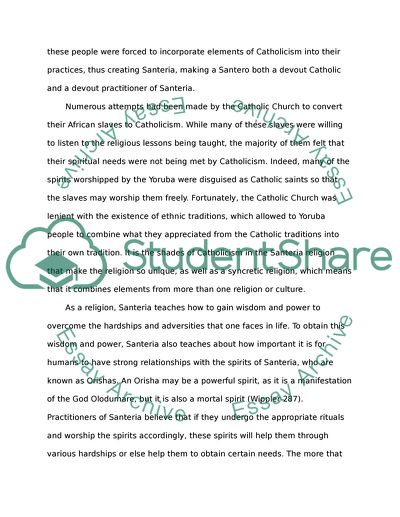Cite this document
(The Living Traditions of Santera Research Paper, n.d.)
The Living Traditions of Santera Research Paper. Retrieved from https://studentshare.org/religion-and-theology/1750464-santeria
The Living Traditions of Santera Research Paper. Retrieved from https://studentshare.org/religion-and-theology/1750464-santeria
(The Living Traditions of Santera Research Paper)
The Living Traditions of Santera Research Paper. https://studentshare.org/religion-and-theology/1750464-santeria.
The Living Traditions of Santera Research Paper. https://studentshare.org/religion-and-theology/1750464-santeria.
“The Living Traditions of Santera Research Paper”, n.d. https://studentshare.org/religion-and-theology/1750464-santeria.


